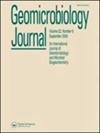乳酸肠球菌在血液相容性AgNPs生物合成中的应用
IF 2.2
4区 环境科学与生态学
Q3 ENVIRONMENTAL SCIENCES
引用次数: 0
摘要
摘要发酵食品和饮料具有潜在的新型益生菌,对人体健康和卫生具有许多有益作用。部落居民经常食用各种当地生产的发酵食品和饮料,因此他们的肠道菌群受益匪浅。印度奥里萨邦的Mayurbhanj地区有许多部落人口。汉迪亚是部落社区中最受欢迎的发酵米饮料,具有与之相关的文化、宗教和社会价值。纳米科学和纳米技术等科学领域的最新进展从根本上改变了我们在人类生活的各个方面诊断、治疗和预防各种疾病的方式。目前的研究是为了探索利用乳酸肠球菌的各种可能性,乳酸肠球菌是一种从发酵米饮料“Handia”中分离出来的益生菌,在合成银纳米颗粒(AgNPs)方面具有功效。通过Fe-SEM、EDS、XRD、FTIR、DLS和紫外可见光谱对合成的AgNPs进行了表征。合成的AgNPs具有较强的抗氧化、抗菌和抗生物膜形成能力。了解从益生菌中绿色合成AgNPs的意义将有助于设计和递送益生菌微生物中存在的生物活性成分,用于未来的药物递送应用和其他基于纳米颗粒的生物医学工程和技术领域的治疗方法。关键词:发酵米酒;拮抗益生菌;纳米银致谢作者感谢各自所在的机构为本工作提供了研究设施。披露声明作者未报告潜在的利益冲突。目前的调查由奥里萨邦高等教育委员会和奥里萨邦政府根据OURIIP青年教师计划(OURIIP种子基金2020/17-动物学)资助。本文章由计算机程序翻译,如有差异,请以英文原文为准。
Utilization of Probiotic Bacteria Enterococcus lactis for Biogenic Synthesis of Hemocompatible AgNPs
AbstractFermented food and beverages have potential novel Probiotic microorganism which possess many beneficial role in human health and hygiene. The tribal people consume variety of locally produced fermented food and beverages regularly and hence their gut microflora are strongly benefited. Mayurbhanj district in Odisha, India is diversified with many tribal population. Handia, is the most preferred fermented rice beverage in the tribal community having cultural, religious and social values associated with it. Recent advances in the fields of science like nanoscience and nanotechnology have radically changed the way we diagnose, treat, and prevent various diseases in all aspects of human life. This current investigation was undertaken to explore the various possibilities to screen the potentiality of utilizing Enterococcus lactis, a probiotic bacteria isolated from the fermented rice beverage “Handia” in terms of their efficacy for synthesis of Silver nanoparticles (AgNPs). The synthesized AgNPs were screened through Fe-SEM, EDS, XRD, FTIR, DLS and UV-visible spectroscopy characterization studies. The synthesized AgNPs exhibited enhanced antioxidant, antimicrobial and anti-biofilm forming capability. Understanding the implications of green-synthesized AgNPs from probiotic bacteria would help in designing and delivery of bioactive components present in probiotic microorganism for future drug delivery application and other nanoparticle based therapeutics in different sectors of biomedical engineering and technology.Keywords: Fermented rice beverageHandiaprobioticssilver nanoparticles AcknowledgmentAuthors are thankful to their respective institutions for providing research facilities to this work.Disclosure statementNo potential conflict of interest was reported by the author(s).Additional informationFundingThe current investigation was funded by Odisha State Higher Education Council, Government of Odisha under the OURIIP scheme for young faculty (OURIIP Seed Fund 2020/17-Zoology).
求助全文
通过发布文献求助,成功后即可免费获取论文全文。
去求助
来源期刊

Geomicrobiology Journal
环境科学-地球科学综合
CiteScore
4.80
自引率
8.70%
发文量
70
审稿时长
3.3 months
期刊介绍:
Geomicrobiology Journal is a unified vehicle for research and review articles in geomicrobiology and microbial biogeochemistry. One or two special issues devoted to specific geomicrobiological topics are published each year. General articles deal with microbial transformations of geologically important minerals and elements, including those that occur in marine and freshwater environments, soils, mineral deposits and rock formations, and the environmental biogeochemical impact of these transformations. In this context, the functions of Bacteria and Archaea, yeasts, filamentous fungi, micro-algae, protists, and their viruses as geochemical agents are examined.
Articles may stress the nature of specific geologically important microorganisms and their activities, or the environmental and geological consequences of geomicrobiological activity.
The Journal covers an array of topics such as:
microbial weathering;
microbial roles in the formation and degradation of specific minerals;
mineralization of organic matter;
petroleum microbiology;
subsurface microbiology;
biofilm form and function, and other interfacial phenomena of geological importance;
biogeochemical cycling of elements;
isotopic fractionation;
paleomicrobiology.
Applied topics such as bioleaching microbiology, geomicrobiological prospecting, and groundwater pollution microbiology are addressed. New methods and techniques applied in geomicrobiological studies are also considered.
 求助内容:
求助内容: 应助结果提醒方式:
应助结果提醒方式:


